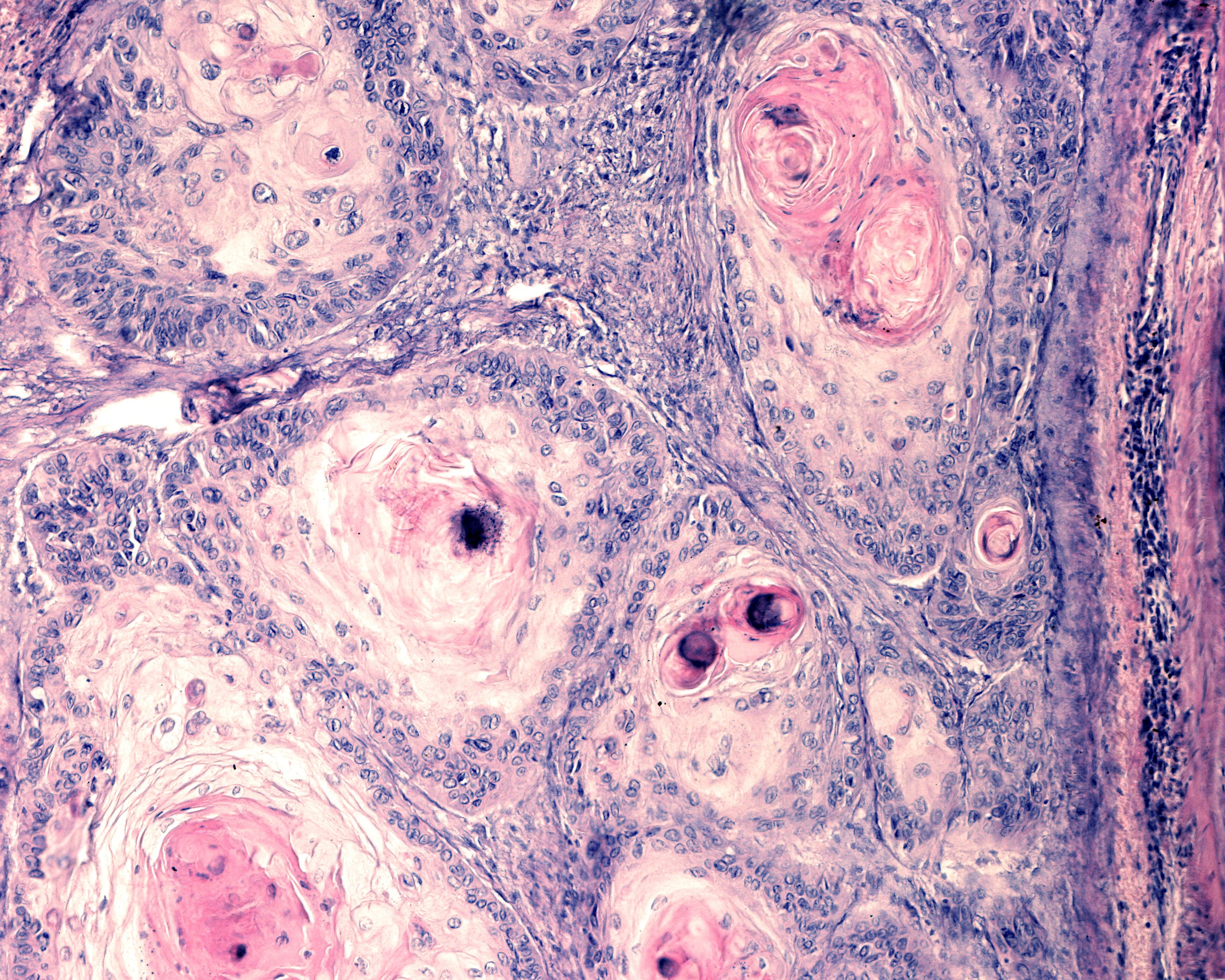- Case-Based Roundtable
- General Dermatology
- Eczema
- Chronic Hand Eczema
- Alopecia
- Aesthetics
- Vitiligo
- COVID-19
- Actinic Keratosis
- Precision Medicine and Biologics
- Rare Disease
- Wound Care
- Rosacea
- Psoriasis
- Psoriatic Arthritis
- Atopic Dermatitis
- Melasma
- NP and PA
- Skin Cancer
- Hidradenitis Suppurativa
- Drug Watch
- Pigmentary Disorders
- Acne
- Pediatric Dermatology
- Practice Management
- Prurigo Nodularis
- Buy-and-Bill
News
Article
14-Year-Study Identifies Survival Rates for Patients With Squamous Cell Carcinoma
Author(s):
Clinically asymptomatic patients receiving alternative to conventional follow-up had a higher 3-year overall survival rate.
Patients with head and neck squamous cell carcinoma (HNSCC) who were clinically asymptomatic had a higher survival rate when follow-up included 18F-fludeoxyglucose–positron emission tomography with computed tomography (18FDG-PET/CT) than those patients who received conventional follow-up.1 The case-control study in France followed adults who had histologically proven HNSCC treated with curative intent between January 1, 2006, and December 31, 2019, and achieved a complete response on imaging at 3 to 6 months.
JosLuis/AdobeStock

Researchers reviewed cases of 782 patients (642 males) with a median age of 61 years. Conventional follow-up (CFU group) was used in 285 cases and 18FDG-PET/CT was used in 497 cases. Patients were followed for at least 3 years and the main outcome measure was overall survival (OS) at 3 years.
Treatment was balanced with 391 patients receiving radiotherapy and 391 patients having surgery. Surveillance lung imaging was performed at 12, 24, and 36 months post-treatment with a chest CT (computed tomography [CFU group]) or using 18FDG-PET/CT. A total of 47 patients were lost to follow-up at 3 years.
Among the 18FDG-PET/CT group, several clinical characteristics at diagnosis were significantly worse than the CFU group, including having a higher rate of cancer history (24.7% vs 13.3%; P = .002), a higher number of patients with immunodeficiency (8.7% vs 3.2%; P = .003), a lower number of patients with a performance status score of 0 (58.1% vs 73%; P < .001), a higher rate of alcohol consumption (39% vs 26.7%; P < .001), and more patients with an advanced stage (75.1% vs 63.2%; P < .001).
“Regardless of the treatment received, 123 of 164 recurrences (75.0%) occurred within 660 days after treatment.”1 In the 18FDG-PET/CT group, 111 relapses (22.3%) occurred. “The overall detection rate of subclinical recurrence by 18FDG-PET/CT was 62 patients (12.4%). Of the total subclinical recurrences, 36 recurrences (58.1%), 19 recurrences (30.6%), and 7 recurrences (11.3%) were detected by 18FDG-PET/CT,” at months 12, 24, and 36, respectively, among patients that were clinically asymptomatic.
The survival rate in the 18FDG-PET/CT group was significantly higher than in the CFU group, at 72.5% compared to 64.3%, P = .002, regardless of the stage at diagnosis. “Cox regression analysis showed an association between undergoing 18FDG-PET/CT and lower risk of death (odds ratio, 0.71; 95% CI, 0.57-0.88; P = .002) compared with CFU after adjustment for covariates (age, sex, comorbidities, primary location, stage, surgeon, year of treatment, and treatment).”1
In the 164 patients with recurrent disease, 3-year OS was significantly higher in the 18FDG-PET/CT group compared to the CFU group.
There was no difference between groups in mean 3-year OS when diagnosed at stage I or II. However, when diagnosed at stage III or IV, the 18FDG-PET/CT group (n = 373) had a longer mean 3-year OS (n = 180; 68.5% vs 55.4%; P < .001, respectively) than the CFU group.
The 18FDG-PET/CT group (n = 176) also had a significantly longer mean OS than the CFU group (n = 100) for oropharyngeal tumors. In oral cavity, laryngeal, and hypopharyngeal tumors, there was no significant difference in mean OS.
The findings showed that 18FDG-PET/CT resulted in a higher 3-year OS than CFU, particularly in patients with disease stage III to IV or oropharyngeal tumors.
Reference
- Leclère J, Clément C, Le Pennec R, et al. An intensive 18F-Fludeoxyglucose–Positron Emission Tomography with computed tomography–based strategy of follow-up in patients treated for head and neck squamous cell carcinoma who are clinically asymptomatic. JAMA Netw Open. 2023;6(8):e2326654. doi:10.1001/jamanetworkopen.2023.26654 https://jamanetwork.com/journals/jamanetworkopen/fullarticle/2807804?utm_source=silverchair&utm_medium=email&utm_campaign=article_alert-jamanetworkopen&utm_content=wklyforyou&utm_term=080223





